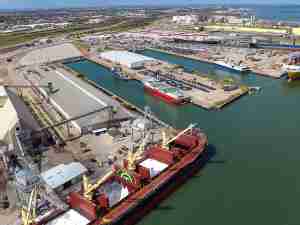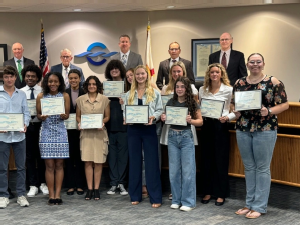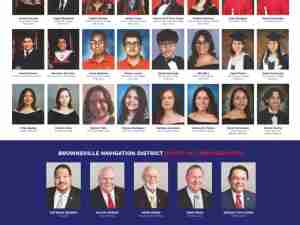Industry leaders Hidrovias do Brasil, Port of Açu and Wilson Sons launched a manifesto for Brazil to overcome historical limitations in this sector. The document entitled “Manifesto for Innovation in the Maritime and Port Sector” says that “despite some examples of excellence in innovation in this field, the country still needs to overcome logistical, regulatory and cultural bottlenecks that prevent more consistent and sustainable progress”.
The manifesto describes four major challenges based on inquiries with stakeholders in the Brazilian maritime, port and shipping sector. These challenges are: disconnection of organizations involved in innovative projects; little incentive for smart risk-taking; lack of long-term planning; little incentive for innovation in procurement processes. The manifesto proposes solutions and calls public and private businesspeople, workers and executives, policy makers, industry regulators, parliamentarians, researchers and other opinion makers for public debate.
From the suggestions presented, the companies that prepared the manifesto believe that there are three main priorities: diagnosing innovation in the maritime and port sector in Brazil with well-defined tracking metrics; rewarding the greatest advances in port innovation; creating a working group to build long-term policies aimed at modernizing the port facilities.
“It is important that the discussion about the challenges and proposals for improvements in this industry may gain the attention of Brazilian society. We want to encourage qualified debate on a topic of capital importance for Brazil: the urgency of boosting the national innovation ecosystem in the maritime, port and shipping industry”, says the director of Digital Transformation at Wilson Sons, Eduardo Valença.
The manifesto points out that, in Brazil, the operational challenges of the maritime, port and shipping industry are the same as in the rest of the world, and that this industry is moving towards autonomous operations of vessels and terminals; technologies that allow larger ships to be received more safely; smoother communication management; and predictability in operations. It also states that the “relative national delay” in the application of major innovations established in the industry leads to higher logistical and operational costs, longer transit times, lower operational safety and impact on greenhouse gas emissions.
.png)
In this challenging context, Mariana Yoshioka, director of Innovation and Technology at Hidrovias do Brasil, says that the manifesto will propel a new reality across this industry. “We believe that Brazil has the essential elements to stand out globally in the maritime, port and shipping sector. With an extensive coastline, consolidated infrastructure and an ecosystem that is rich in cutting-edge technologies, we have the unique chance to transform challenges into opportunities. By working together, we can leverage innovation and boost the country’s economic and social development”, the executive says.
With 26 pages, the document provides performance figures for Brazilian ports compared to OECD (Organization for Economic Cooperation and Development) countries and the USA. Regarding the average ship waiting time, in Brazil it is 5.5 days, while in the USA it is much shorter: 2 days. Brazil’s average customs clearance time is 49 hours, compared to 12.7 hours in the OECD, at a cost of US$ 862 here, compared to US$ 136 there. The manifesto also shows that Brazil is 60th in the global economic competitiveness ranking. “We are less competitive and less efficient, but it is possible to change this scenario”.
The manifesto describes that, in many countries, technologies such as artificial intelligence, robotics, autonomous systems and real-time data analysis are making the port and shipping environment a dynamic laboratory for innovative solutions. “We can and should learn from the best practices of smart ports and waterways by creatively adjusting them to solve the problems of our reality”. It further adds: “by proposing pathways, we hope to encourage robust actions to solve or mitigate barriers to innovation”.
The study also highlights the global relevance of the maritime and port sector, where 90% of world trade between countries is carried out by sea. Furthermore, the annual added value of products transported by sea is US$ 5 trillion, while annual spending on maritime freight services totals US$ 1 trillion
The manifesto indicates that Brazil is decades behind in sectoral innovations. It mentions the Vessel Traffic Service (VTS) implemented in 1948 in the United Kingdom and, here, in 2015; dynamic draft in berthing windows, available in the Netherlands since 1985, but here only in 2022 (the Maritime Authority Standard was published in December 2019); and the PCS (Port Community System), implemented in Europe in the 1970s.
“Call for joint action”
In its conclusions, the manifesto makes a “call for joint action” and says that Brazil has comparative advantages to keep up with the global level of innovation in the maritime, port and shipping industry. “We have one of the largest coastlines in the world; robust infrastructure; trade flow that generates more than US$ 600 billion annually; corporations and startups developing cutting edge technologies; an academic environment with qualified researchers; public funding organizations, such as the National Council for Scientific and Technological Development (CNPq), and government authorities committed to this agenda”.
Vinícius Patel, director of the Port Administration for the Port of Açu, says that the manifesto calls for all stakeholders — government, companies, academia, research centres and startups — to connect and work together based on a consensus toward overcoming bottlenecks. “It is past time for Brazil to position itself in the maritime and port sector in keeping with what has been developed in the world and with the size of our economy. Joint action is mandatory to streamline the industry in order to generate efficiency and prosperity for Brazilian society”, Patel concludes.
About the writing of the manifesto
The “Manifesto for Innovation in the Maritime and Port Sector” was prepared by an interdisciplinary working group coordinated by professionals from Hidrovias do Brasil, Port of Açu and Wilson Sons. The initiative targeted at identifying the sector's main challenges and proposing solutions for public debate was launched on July 13, 2023, at the event Portos ao Cubo, in São Paulo, which had 503 participants representing key industry players.
A Working Group (WG) was built to gather information from 34 stakeholders from the maritime, port and shipping sector through interviews and questionnaires, including regulatory agencies, associations, port authorities, private use terminals, startups, the federal government, and international organizations. Independent experts were also consulted. Technical reports and specialized media reports served as complementary sources. The WG analysed the information collected — organized into four major challenges — and proposed solutions.










